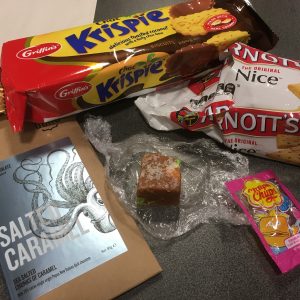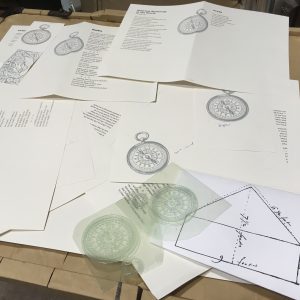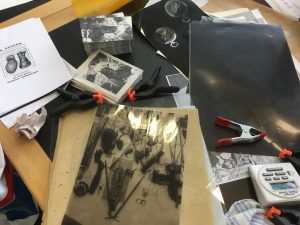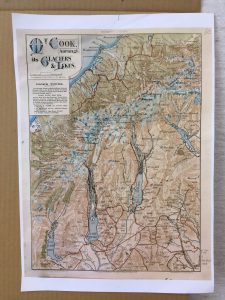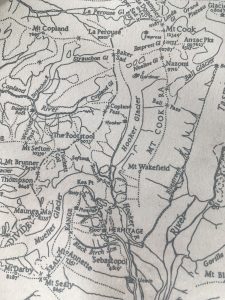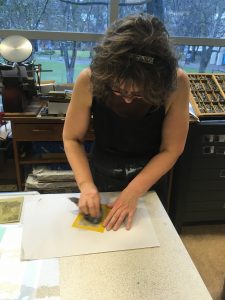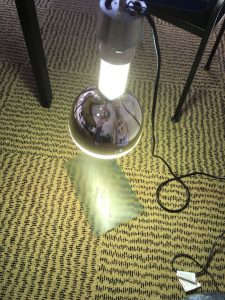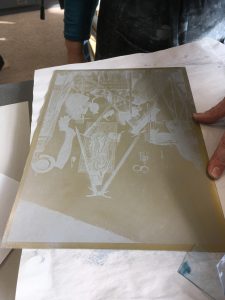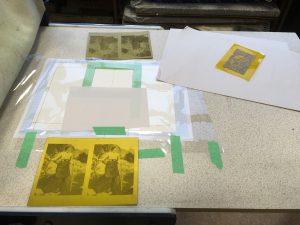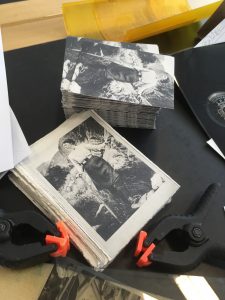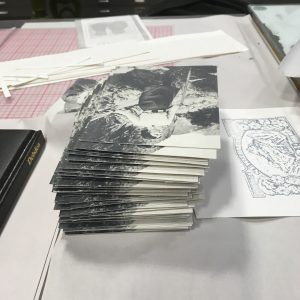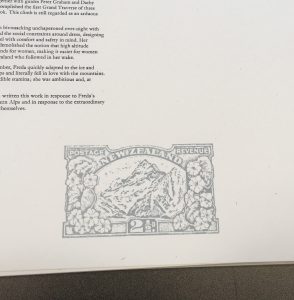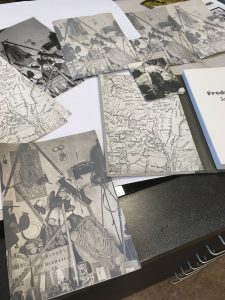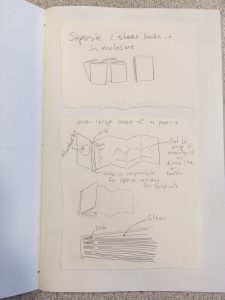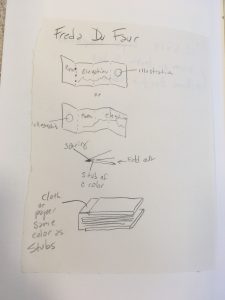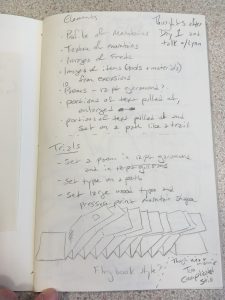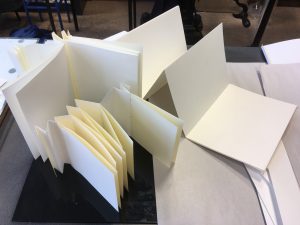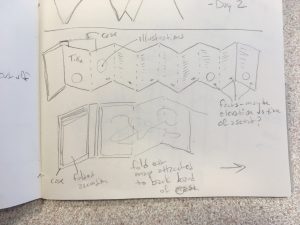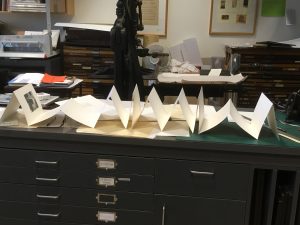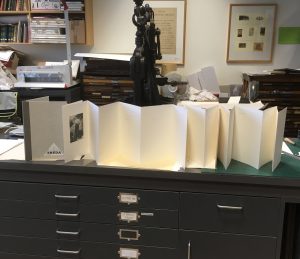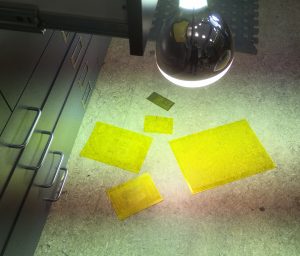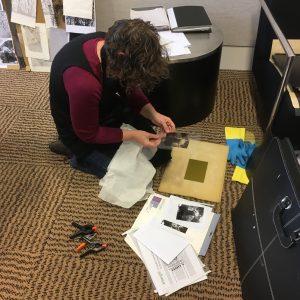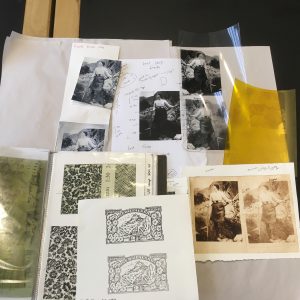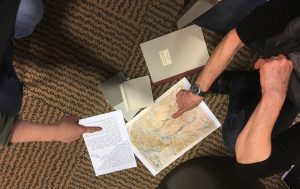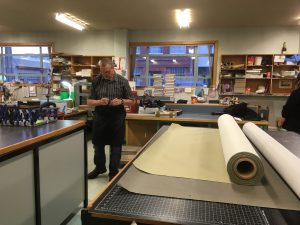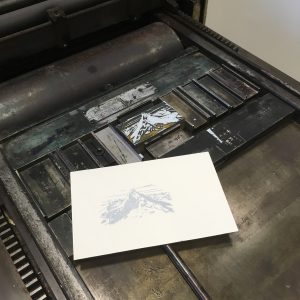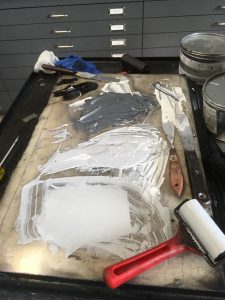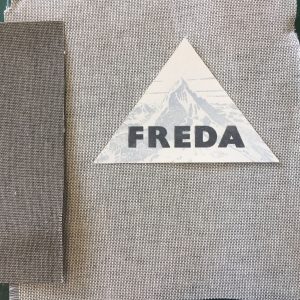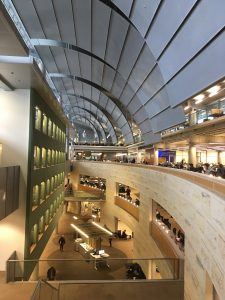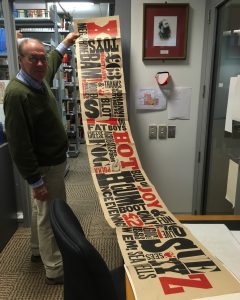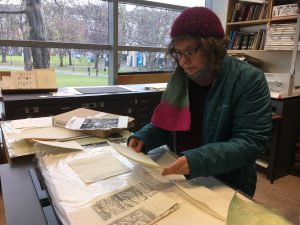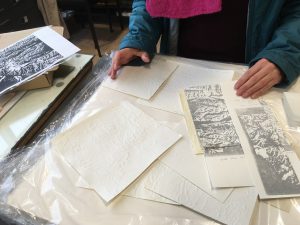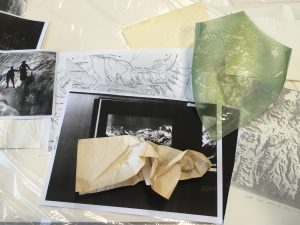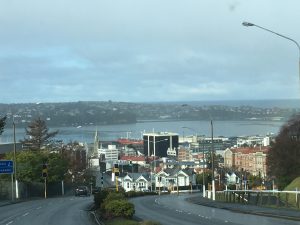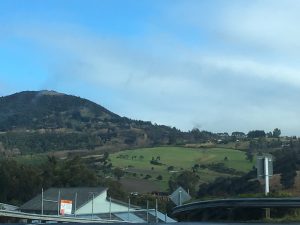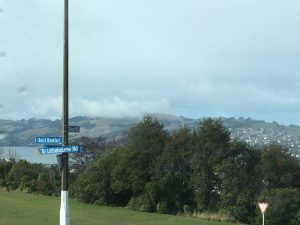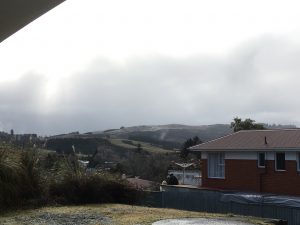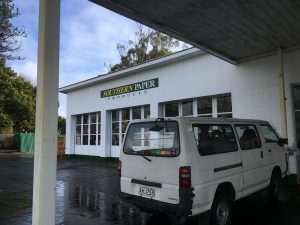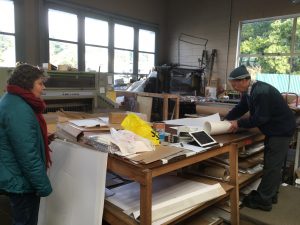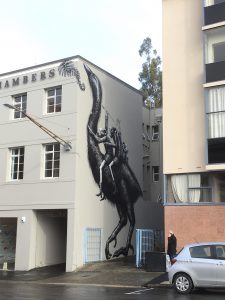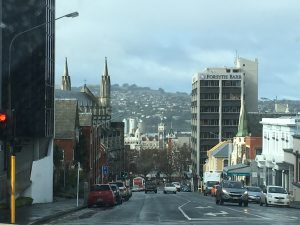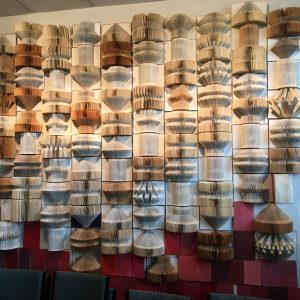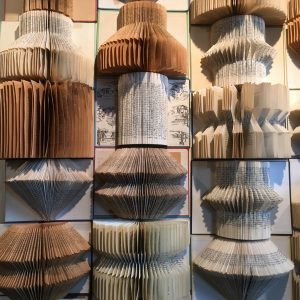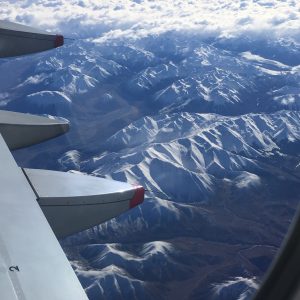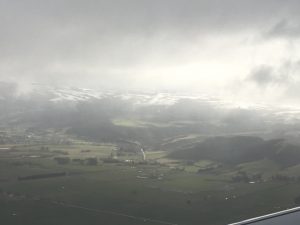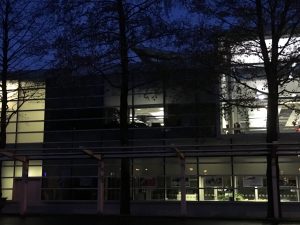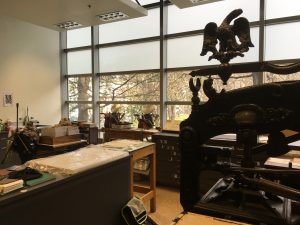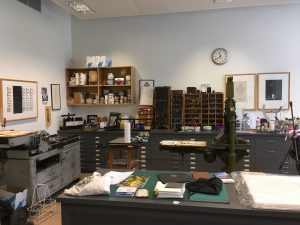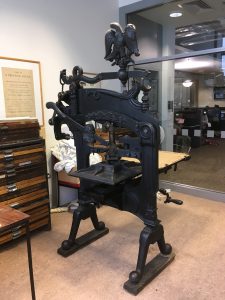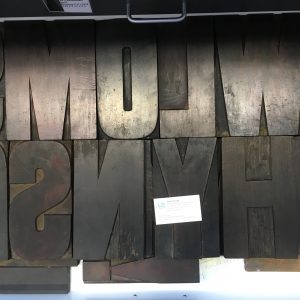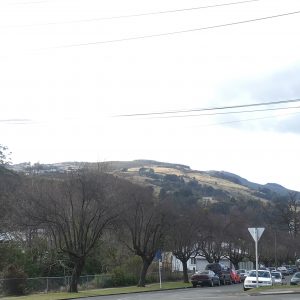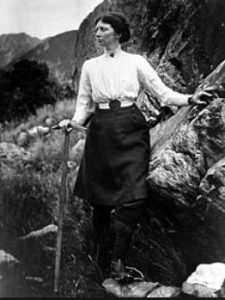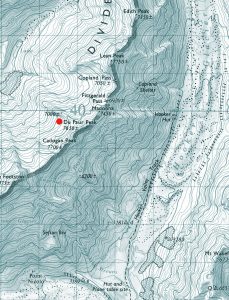With the structure of the book settled, the cover materials decided and the labels printed it was time to work out the pages more fully. Before coming up with the dimensions for the book, I set the poem (there are eleven of them) with the longest line length: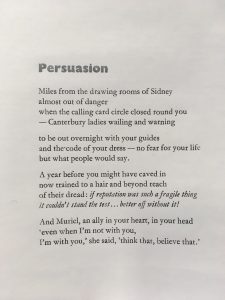
and the poem with the most lines:
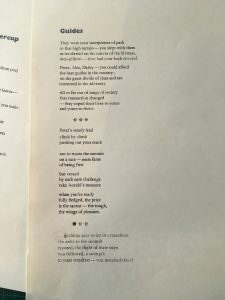
This helped me figure how what page dimensions would fit the poems best. I also considered the size of the sheet of paper we would be working with, so we could use as much of the sheet without wasting paper.
Our paper was delivered to the University Bindery and Don cut it up to the press sheet size we needed. Needless to say, I was excited when he let me use the huge guillotine to cut some of the paper myself!
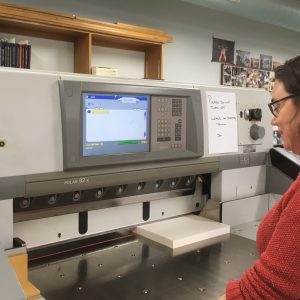
Now to setting type! I set myself up so I could keep an eye on all the people, birds and traffic outside while I worked.
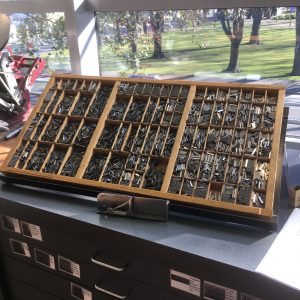
My choice for the body type was pretty much made for me. I wanted to be able to have a lot of text set at once so I could move through the printing quickly, and not have to keep breaking down type to set the next bit. In order to do this I would need a lot of type. The type Otakou Press has the most of is 12 point Garamond. Perfect. That’s what I set those first poems with and now it was time to set more. I tried out a few different versions with other type and colors for the titles of the poems.
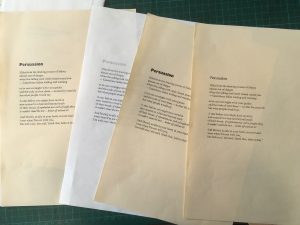
In the end I decided—with Lynn and Rhian agreeing—the 18pt Gill Sans Extra Heavy in gray worked best. (here’s that picture again)

I like the variation from all Garamond and the more modern touch it lends the design. At first I was looking for something less heavy and fat, but we didn’t have exactly what I was looking for. Printing it in gray ink knocks the big type back a bit so it’s not so over powering. I think this is what’s fun (in a slightly twisted way perhaps) when hand setting type—I don’t always have on hand exactly what I want, so I have to get more creative and resourceful to make what I do have work.
So I went about setting six of the poems and proofing them.
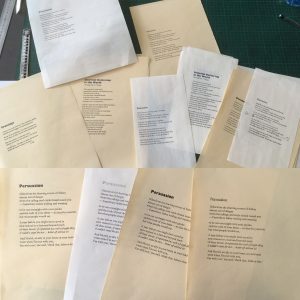
Here’s a couple views of the work space.
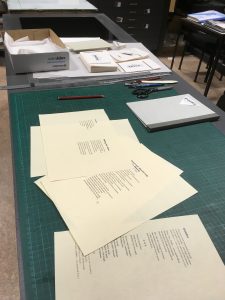
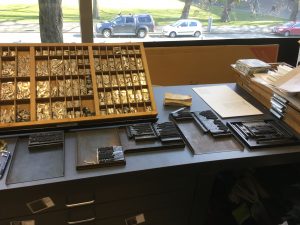
I printed some of the proofs on this press.
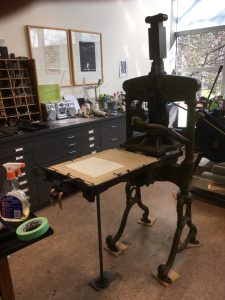
It’s a sweet little press. I feel like it gets eclipsed by the big dramatic Columbian Press. I’m probably anthropomorphizing too much again.
Don came back in the next day with a mock up of the cover with the pages/accordion inside.
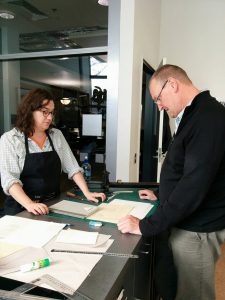
We tweaked the design a bit to make sure the hinges between press sheets would be at the spine edge of the book. I’ve had success with them at the front of a book before, but that was with thinner paper. This one is definitely better with the hinges at the back.
Here’s the cover that Don made.
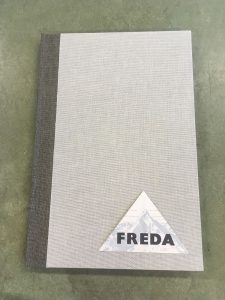
Since we need to have the whole edition bound before the wayzgoose (celebration at the end of a printing job) on September 7th, we decided it was a good idea if the bindery could get at least the first 3 press sheets soon, so they could start gluing them together. This meant that—with our design—the title page, colophon and introduction about Freda and poems would have to be set and printed right away. I usually like to print the title page and colophon last, but not this time!
So I had to work out a design for the title page. Again, I didn’t have exactly what I thought I wanted for type. I tried out a few things.
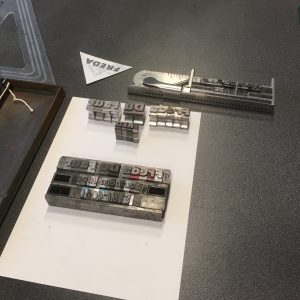
In the end we all liked this the best.
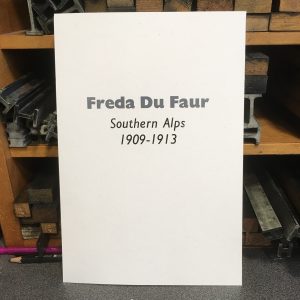
It was some fussy two color hand inking (more about that later).
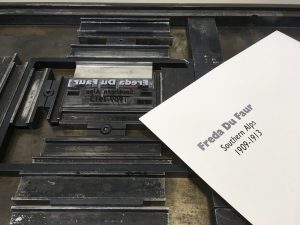
But I printed 160 of them. We need an edition of 120, but it’s always good to have extras—just in case. I’m a bit extra worried, so I wanted a lot of extra!
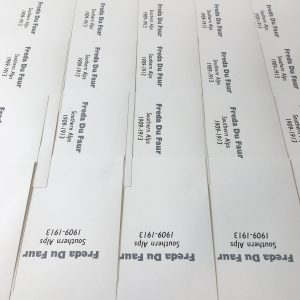
Sometimes the coolest stuff that comes from printing is the clean up.
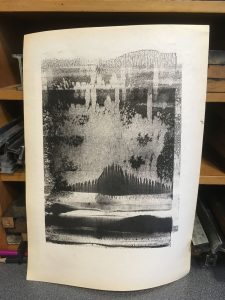
This is what happened when I was cleaning off the roller.
So along with all my setting, proofing and printing—and Lynn’s plate making, mixing inks and printing—we’ve had a lot of visitors. Some fans of the Otakou Press and the Printer in Residence program have been stopping by to say hello and see what we’re doing. We’ve also had classes from the University as well as the Polytechnic stop in to talk with us about the project.
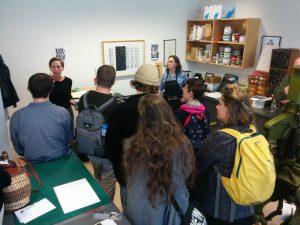
Rhian, Lynn (taking the picture) and I spoke with this writing class (Lynn’s taking the picture).
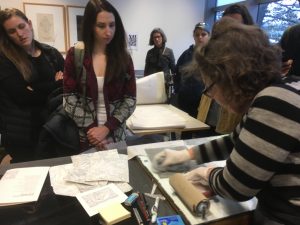
Lynn showed a science and communication class how she makes and prints the solar plates she’s working with.
These visits have been fun. Word is definitely getting out, thanks to Donald. We even had the local news come in and interview us (more about that later too) and the newspaper! I guess we’re big news in Dunedin!
